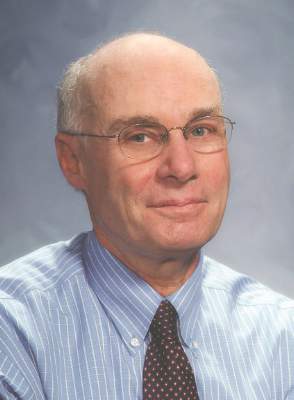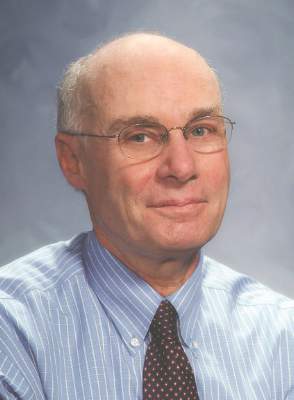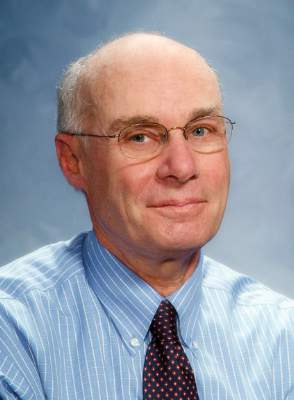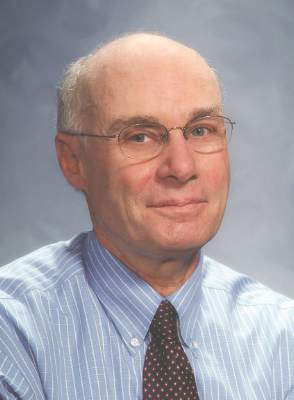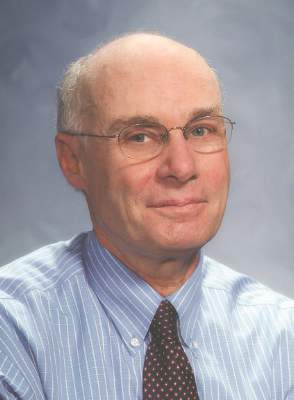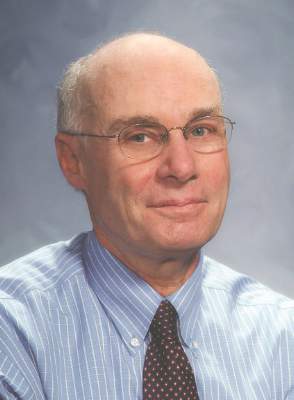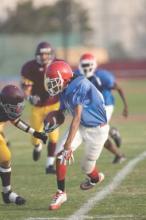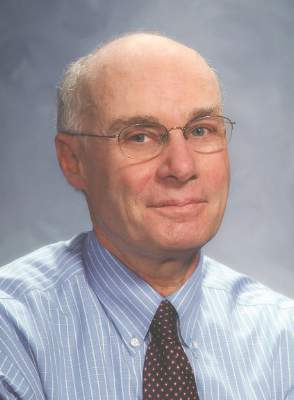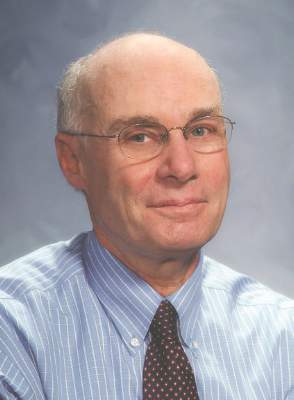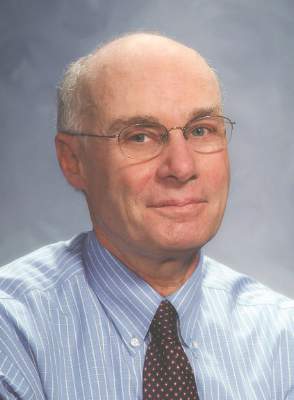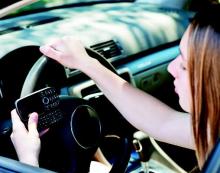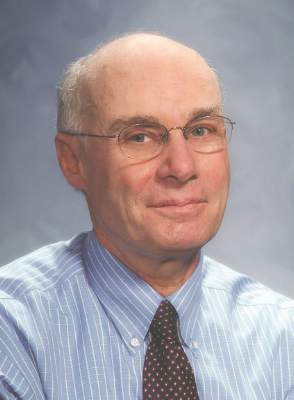User login
Help at a cost
Have you read the study with the weighty title of “Fully Capitated Payment Breakeven Rate for a Mid-Size Pediatric Practice?” (Pediatrics. 2016, July 29. doi: 10.1542/peds.2015-4367). You should! Of course, it’s easy for me to admonish you because my active practice days are behind me, and I have the time to read things with intimidating titles. But if you have had the time it takes to read the handwriting on the wall, you know that fee for service (FFS) is on the endangered list and is being replaced by a variety of other payment models, many of which are based on some form of capitation. Even just a cursory reading of this study from the Center of Healthcare Innovation and Policy Research at George Washington University should help you appreciate the complexities implicit in the transition from FFS to capitation and give you a sense of how it might affect the way you practice.
To amass the data they needed to run their computer models, the investigators had to make some assumptions. Here are just a few: The average pediatrician salary was pegged at $180,000, and she/he would be seeing 25 patients per day for 220 clinical days in the year. The practice she/he is working in has a staff to physician ratio of 3.2. Do you even know what your practice’s staff to physician ratio is? Is it ever discussed? How do their assumptions square with your reality?
The researchers also assumed that when practices transition to a capitated system many of them also adopt a primary care medical home (PCMH) model that often includes changes in staffing ratios almost always resulting in a higher staff to physician ratio. When the researchers fed their model even modest increases in staff to physician ratio from 3.2 to 4.0 or 4.4, the result was an increase in the break-even payment rate of between 12% and 23%. However, this study doesn’t answer whether related changes in panel size and patient outcome would make these increases sustainable.
It also doesn’t include the complexities that are inherent in the trend toward part-time employment. How good is your practice at optimizing physician to staff ratios when several physicians have chosen to work part-time? Are the physicians’ schedules arranged to minimize resource-wasting overlap in staffing? How efficient are you at utilizing support staff? For example, do you do your own measurements as part of your exam and give immunizations? How does this compare with your peers? Is your efficiency paying for some of their overhead?
If you are already using a PCMH model, how efficient have you been in using the additional support staff that it requires? Measuring the improvement in quality the change has created is difficult, but it should be fairly easy to determine the cost of the added staffing.
The investigators acknowledge that they have not included the cost of immunization in their models, and I don’t think that they expect to us take their numbers too seriously. But the first line in the authors’ conclusion is the reason that you should take the time to read this study. “Practices are more likely to succeed in capitated models if pediatricians understand how these models alter practice finances.”
You may have gone into pediatrics because of the noble causes that the specialty espouses. But it’s time to swallow hard and acknowledge that this is one of those situations in which it is all about the money. You need to keep informed.
Dr. Wilkoff practiced primary care pediatrics in Brunswick, Maine, for nearly 40 years. He has authored several books on behavioral pediatrics including “How to Say No to Your Toddler.” Email him at [email protected].
Have you read the study with the weighty title of “Fully Capitated Payment Breakeven Rate for a Mid-Size Pediatric Practice?” (Pediatrics. 2016, July 29. doi: 10.1542/peds.2015-4367). You should! Of course, it’s easy for me to admonish you because my active practice days are behind me, and I have the time to read things with intimidating titles. But if you have had the time it takes to read the handwriting on the wall, you know that fee for service (FFS) is on the endangered list and is being replaced by a variety of other payment models, many of which are based on some form of capitation. Even just a cursory reading of this study from the Center of Healthcare Innovation and Policy Research at George Washington University should help you appreciate the complexities implicit in the transition from FFS to capitation and give you a sense of how it might affect the way you practice.
To amass the data they needed to run their computer models, the investigators had to make some assumptions. Here are just a few: The average pediatrician salary was pegged at $180,000, and she/he would be seeing 25 patients per day for 220 clinical days in the year. The practice she/he is working in has a staff to physician ratio of 3.2. Do you even know what your practice’s staff to physician ratio is? Is it ever discussed? How do their assumptions square with your reality?
The researchers also assumed that when practices transition to a capitated system many of them also adopt a primary care medical home (PCMH) model that often includes changes in staffing ratios almost always resulting in a higher staff to physician ratio. When the researchers fed their model even modest increases in staff to physician ratio from 3.2 to 4.0 or 4.4, the result was an increase in the break-even payment rate of between 12% and 23%. However, this study doesn’t answer whether related changes in panel size and patient outcome would make these increases sustainable.
It also doesn’t include the complexities that are inherent in the trend toward part-time employment. How good is your practice at optimizing physician to staff ratios when several physicians have chosen to work part-time? Are the physicians’ schedules arranged to minimize resource-wasting overlap in staffing? How efficient are you at utilizing support staff? For example, do you do your own measurements as part of your exam and give immunizations? How does this compare with your peers? Is your efficiency paying for some of their overhead?
If you are already using a PCMH model, how efficient have you been in using the additional support staff that it requires? Measuring the improvement in quality the change has created is difficult, but it should be fairly easy to determine the cost of the added staffing.
The investigators acknowledge that they have not included the cost of immunization in their models, and I don’t think that they expect to us take their numbers too seriously. But the first line in the authors’ conclusion is the reason that you should take the time to read this study. “Practices are more likely to succeed in capitated models if pediatricians understand how these models alter practice finances.”
You may have gone into pediatrics because of the noble causes that the specialty espouses. But it’s time to swallow hard and acknowledge that this is one of those situations in which it is all about the money. You need to keep informed.
Dr. Wilkoff practiced primary care pediatrics in Brunswick, Maine, for nearly 40 years. He has authored several books on behavioral pediatrics including “How to Say No to Your Toddler.” Email him at [email protected].
Have you read the study with the weighty title of “Fully Capitated Payment Breakeven Rate for a Mid-Size Pediatric Practice?” (Pediatrics. 2016, July 29. doi: 10.1542/peds.2015-4367). You should! Of course, it’s easy for me to admonish you because my active practice days are behind me, and I have the time to read things with intimidating titles. But if you have had the time it takes to read the handwriting on the wall, you know that fee for service (FFS) is on the endangered list and is being replaced by a variety of other payment models, many of which are based on some form of capitation. Even just a cursory reading of this study from the Center of Healthcare Innovation and Policy Research at George Washington University should help you appreciate the complexities implicit in the transition from FFS to capitation and give you a sense of how it might affect the way you practice.
To amass the data they needed to run their computer models, the investigators had to make some assumptions. Here are just a few: The average pediatrician salary was pegged at $180,000, and she/he would be seeing 25 patients per day for 220 clinical days in the year. The practice she/he is working in has a staff to physician ratio of 3.2. Do you even know what your practice’s staff to physician ratio is? Is it ever discussed? How do their assumptions square with your reality?
The researchers also assumed that when practices transition to a capitated system many of them also adopt a primary care medical home (PCMH) model that often includes changes in staffing ratios almost always resulting in a higher staff to physician ratio. When the researchers fed their model even modest increases in staff to physician ratio from 3.2 to 4.0 or 4.4, the result was an increase in the break-even payment rate of between 12% and 23%. However, this study doesn’t answer whether related changes in panel size and patient outcome would make these increases sustainable.
It also doesn’t include the complexities that are inherent in the trend toward part-time employment. How good is your practice at optimizing physician to staff ratios when several physicians have chosen to work part-time? Are the physicians’ schedules arranged to minimize resource-wasting overlap in staffing? How efficient are you at utilizing support staff? For example, do you do your own measurements as part of your exam and give immunizations? How does this compare with your peers? Is your efficiency paying for some of their overhead?
If you are already using a PCMH model, how efficient have you been in using the additional support staff that it requires? Measuring the improvement in quality the change has created is difficult, but it should be fairly easy to determine the cost of the added staffing.
The investigators acknowledge that they have not included the cost of immunization in their models, and I don’t think that they expect to us take their numbers too seriously. But the first line in the authors’ conclusion is the reason that you should take the time to read this study. “Practices are more likely to succeed in capitated models if pediatricians understand how these models alter practice finances.”
You may have gone into pediatrics because of the noble causes that the specialty espouses. But it’s time to swallow hard and acknowledge that this is one of those situations in which it is all about the money. You need to keep informed.
Dr. Wilkoff practiced primary care pediatrics in Brunswick, Maine, for nearly 40 years. He has authored several books on behavioral pediatrics including “How to Say No to Your Toddler.” Email him at [email protected].
Boxed for delivery
When our second daughter was born, she came home from the hospital in a box. All the babies born at Duke University Medical Center in 1973 were sent home in a cardboard box that had served as their bassinets during their stay in the newborn nursery. As I recall, the boxes were decorated with storks and musical notes; had spaces for the babies’ names, measurements, and birth dates; and had open slots that functioned as carrying handles.
Of course, 1973 predated crash-tested car seats, and so we put little Emily and her box in what we referred to as the “wayback” of our Ford Pinto wagon, a car that subsequently earned a reputation for turning into a fireball when involved in a rear-end collision. However, I believe I did take the extra precaution of “securing” the box in place with a bungee cord.
But Emily survived, and I filed away the memory of her cardboard bassinet until a few weeks ago when I read a story in the New York Times, “Why Finland’s Newborns Sleep in Cardboard Cribs” (Eli Rosenberg, July 6, 2016). It turns out the Finnish government gives out 40,000 cardboard boxes to pregnant women who agree to have a medical exam during the first trimester of their pregnancy. The gift boxes come along with 50 items of baby ware appropriate for Finland’s frigid climate, including a warm coat and a balaclava.
The baby box program began in the late 1930s as a way to encourage mothers to visit physicians. The current Finnish infant mortality is one of the lowest in the world and less than half of ours in the United States. There are some who have been tempted to attribute this dramatic decline to the baby box program. But it is hard to tease out one factor in a country that offers a 10-month paid parental leave and guarantees that a stay-at-home parent may return to his or her job at any time before the child’s third birthday.
Even without a broad social service support system, the cardboard box crib can save lives. For families who can’t afford a crib, the box offers a safer alternative to a couch with soft cushions and face-trapping gaps between its cushions, or to a bed shared with a sleep-deprived or inebriated parent, or to an antique crib with neck-pinching slats and layers of lead-laced paint.
Given this high costs of raising a child, the option of a no-cost cardboard box crib should appeal to most young families. But you know as well as I do that parents to be (and grandparents to be) are primed to buy and are focused on creating nurseries that match the images they see in the glossy magazines targeted at their vulnerable demographic.
It will require a major public relations campaign to counteract the image that bedding one’s precious newborn in a cardboard box conjures up. But maybe there is a role for us. If pediatricians began promoting the advantages of cardboard cribs, they might just catch on. On second thought, maybe we should focus our energies on promoting more child-friendly parental leave policies.
Dr. Wilkoff practiced primary care pediatrics in Brunswick, Maine, for nearly 40 years. He has authored several books on behavioral pediatrics including “How to Say No to Your Toddler.”
When our second daughter was born, she came home from the hospital in a box. All the babies born at Duke University Medical Center in 1973 were sent home in a cardboard box that had served as their bassinets during their stay in the newborn nursery. As I recall, the boxes were decorated with storks and musical notes; had spaces for the babies’ names, measurements, and birth dates; and had open slots that functioned as carrying handles.
Of course, 1973 predated crash-tested car seats, and so we put little Emily and her box in what we referred to as the “wayback” of our Ford Pinto wagon, a car that subsequently earned a reputation for turning into a fireball when involved in a rear-end collision. However, I believe I did take the extra precaution of “securing” the box in place with a bungee cord.
But Emily survived, and I filed away the memory of her cardboard bassinet until a few weeks ago when I read a story in the New York Times, “Why Finland’s Newborns Sleep in Cardboard Cribs” (Eli Rosenberg, July 6, 2016). It turns out the Finnish government gives out 40,000 cardboard boxes to pregnant women who agree to have a medical exam during the first trimester of their pregnancy. The gift boxes come along with 50 items of baby ware appropriate for Finland’s frigid climate, including a warm coat and a balaclava.
The baby box program began in the late 1930s as a way to encourage mothers to visit physicians. The current Finnish infant mortality is one of the lowest in the world and less than half of ours in the United States. There are some who have been tempted to attribute this dramatic decline to the baby box program. But it is hard to tease out one factor in a country that offers a 10-month paid parental leave and guarantees that a stay-at-home parent may return to his or her job at any time before the child’s third birthday.
Even without a broad social service support system, the cardboard box crib can save lives. For families who can’t afford a crib, the box offers a safer alternative to a couch with soft cushions and face-trapping gaps between its cushions, or to a bed shared with a sleep-deprived or inebriated parent, or to an antique crib with neck-pinching slats and layers of lead-laced paint.
Given this high costs of raising a child, the option of a no-cost cardboard box crib should appeal to most young families. But you know as well as I do that parents to be (and grandparents to be) are primed to buy and are focused on creating nurseries that match the images they see in the glossy magazines targeted at their vulnerable demographic.
It will require a major public relations campaign to counteract the image that bedding one’s precious newborn in a cardboard box conjures up. But maybe there is a role for us. If pediatricians began promoting the advantages of cardboard cribs, they might just catch on. On second thought, maybe we should focus our energies on promoting more child-friendly parental leave policies.
Dr. Wilkoff practiced primary care pediatrics in Brunswick, Maine, for nearly 40 years. He has authored several books on behavioral pediatrics including “How to Say No to Your Toddler.”
When our second daughter was born, she came home from the hospital in a box. All the babies born at Duke University Medical Center in 1973 were sent home in a cardboard box that had served as their bassinets during their stay in the newborn nursery. As I recall, the boxes were decorated with storks and musical notes; had spaces for the babies’ names, measurements, and birth dates; and had open slots that functioned as carrying handles.
Of course, 1973 predated crash-tested car seats, and so we put little Emily and her box in what we referred to as the “wayback” of our Ford Pinto wagon, a car that subsequently earned a reputation for turning into a fireball when involved in a rear-end collision. However, I believe I did take the extra precaution of “securing” the box in place with a bungee cord.
But Emily survived, and I filed away the memory of her cardboard bassinet until a few weeks ago when I read a story in the New York Times, “Why Finland’s Newborns Sleep in Cardboard Cribs” (Eli Rosenberg, July 6, 2016). It turns out the Finnish government gives out 40,000 cardboard boxes to pregnant women who agree to have a medical exam during the first trimester of their pregnancy. The gift boxes come along with 50 items of baby ware appropriate for Finland’s frigid climate, including a warm coat and a balaclava.
The baby box program began in the late 1930s as a way to encourage mothers to visit physicians. The current Finnish infant mortality is one of the lowest in the world and less than half of ours in the United States. There are some who have been tempted to attribute this dramatic decline to the baby box program. But it is hard to tease out one factor in a country that offers a 10-month paid parental leave and guarantees that a stay-at-home parent may return to his or her job at any time before the child’s third birthday.
Even without a broad social service support system, the cardboard box crib can save lives. For families who can’t afford a crib, the box offers a safer alternative to a couch with soft cushions and face-trapping gaps between its cushions, or to a bed shared with a sleep-deprived or inebriated parent, or to an antique crib with neck-pinching slats and layers of lead-laced paint.
Given this high costs of raising a child, the option of a no-cost cardboard box crib should appeal to most young families. But you know as well as I do that parents to be (and grandparents to be) are primed to buy and are focused on creating nurseries that match the images they see in the glossy magazines targeted at their vulnerable demographic.
It will require a major public relations campaign to counteract the image that bedding one’s precious newborn in a cardboard box conjures up. But maybe there is a role for us. If pediatricians began promoting the advantages of cardboard cribs, they might just catch on. On second thought, maybe we should focus our energies on promoting more child-friendly parental leave policies.
Dr. Wilkoff practiced primary care pediatrics in Brunswick, Maine, for nearly 40 years. He has authored several books on behavioral pediatrics including “How to Say No to Your Toddler.”
Sticks and stones and words
“Sticks and stones may break my bones, but words will never hurt me.” This mantra was the retort of choice for thousands of apparently resilient premillennial children. But you and I, and just about everyone else, know that words can be very hurtful. A recent article in the journal Eating and Weight Disorders entitled, “ ‘Don’t eat so much’: How parent comments relate to female weight satisfaction” (Eat Weight Disord. 2016 Jun 6. [Epub ahead of print]) reminds us that the pain can last forever.
In a retrospective study of 501 young women aged 20-35 years, the investigators asked whether the women could recall their parents making any comments about their weight when they were young children. What the authors discovered was that even among young women who were of normal weight, those who could recall their parents making a comment about their weight were more dissatisfied with their body weight than the young women who could not recall such a comment. However, if the comment had been about eating habits and not weight, then there was no significant association with weight dissatisfaction.
Before we rush out to send all of the parents of weight-dissatisfied young women on a guilt trip, let’s remember that this was a retrospective study. Let’s consider the not unlikely explanation that there may be something built into the psyche of weight-dissatisfied young women that sharpens their memory for negative comments from friends and family.
Regardless of how we interpret the findings from this study, it is probably safe to say that telling a young girl that she is overweight doesn’t help and should be avoided. This is just another example of how poorly chosen words can be hurtful. But it is also an example of how words alone are seldom shapers of positive behaviors. You can’t talk a picky eater into eating spinach anymore than you can talk the child in the middle of a tantrum into settling down. Good manners are best learned by modeling the behavior of respected adults and not by being subjected to a series of parental lectures. Telling a child she is overweight won’t solve the problem.
So what is the parent of an obese child to do? Unfortunately, many parents of obese children don’t perceive their child as being significantly overweight. But let’s assume we have cleared that hurdle of denial. If telling the child she is overweight is the wrong thing to do, then her parents are forced into using strategies that are subliminal, applied slowly and patiently – silently.
These strategies could include gradually decreasing the child’s screen time, hoping that it will be replaced by calorie-burning activities; changing the food available for all the inhabitants of the home to increase the likelihood that healthier choices will dominate; and decreasing serving sizes. It is critical that these changes are done so slowly that they go unnoticed by the child. If the child questions the changes, then the response should be that they are being done to help the entire family to be healthier, and that they are not being targeted at any one individual. Of course, the big problem is getting the rest of the family to buy into the changes so that the overweight child doesn’t become a scapegoat.
Shielding the overweight child from the blame game is much easier if the parents have been careful to avoid labeling from the moment they realized or accepted that the child had a weight problem. Here is where we pediatricians can play a critical role in our choice of words, and the setting in which we discuss the child’s weight with the parents. We must point out to the parents that their words can create a hurt that may not ever go away.
Dr. Wilkoff practiced primary care pediatrics in Brunswick, Maine, for nearly 40 years. He has authored several books on behavioral pediatrics, including “How to Say No to Your Toddler.”
“Sticks and stones may break my bones, but words will never hurt me.” This mantra was the retort of choice for thousands of apparently resilient premillennial children. But you and I, and just about everyone else, know that words can be very hurtful. A recent article in the journal Eating and Weight Disorders entitled, “ ‘Don’t eat so much’: How parent comments relate to female weight satisfaction” (Eat Weight Disord. 2016 Jun 6. [Epub ahead of print]) reminds us that the pain can last forever.
In a retrospective study of 501 young women aged 20-35 years, the investigators asked whether the women could recall their parents making any comments about their weight when they were young children. What the authors discovered was that even among young women who were of normal weight, those who could recall their parents making a comment about their weight were more dissatisfied with their body weight than the young women who could not recall such a comment. However, if the comment had been about eating habits and not weight, then there was no significant association with weight dissatisfaction.
Before we rush out to send all of the parents of weight-dissatisfied young women on a guilt trip, let’s remember that this was a retrospective study. Let’s consider the not unlikely explanation that there may be something built into the psyche of weight-dissatisfied young women that sharpens their memory for negative comments from friends and family.
Regardless of how we interpret the findings from this study, it is probably safe to say that telling a young girl that she is overweight doesn’t help and should be avoided. This is just another example of how poorly chosen words can be hurtful. But it is also an example of how words alone are seldom shapers of positive behaviors. You can’t talk a picky eater into eating spinach anymore than you can talk the child in the middle of a tantrum into settling down. Good manners are best learned by modeling the behavior of respected adults and not by being subjected to a series of parental lectures. Telling a child she is overweight won’t solve the problem.
So what is the parent of an obese child to do? Unfortunately, many parents of obese children don’t perceive their child as being significantly overweight. But let’s assume we have cleared that hurdle of denial. If telling the child she is overweight is the wrong thing to do, then her parents are forced into using strategies that are subliminal, applied slowly and patiently – silently.
These strategies could include gradually decreasing the child’s screen time, hoping that it will be replaced by calorie-burning activities; changing the food available for all the inhabitants of the home to increase the likelihood that healthier choices will dominate; and decreasing serving sizes. It is critical that these changes are done so slowly that they go unnoticed by the child. If the child questions the changes, then the response should be that they are being done to help the entire family to be healthier, and that they are not being targeted at any one individual. Of course, the big problem is getting the rest of the family to buy into the changes so that the overweight child doesn’t become a scapegoat.
Shielding the overweight child from the blame game is much easier if the parents have been careful to avoid labeling from the moment they realized or accepted that the child had a weight problem. Here is where we pediatricians can play a critical role in our choice of words, and the setting in which we discuss the child’s weight with the parents. We must point out to the parents that their words can create a hurt that may not ever go away.
Dr. Wilkoff practiced primary care pediatrics in Brunswick, Maine, for nearly 40 years. He has authored several books on behavioral pediatrics, including “How to Say No to Your Toddler.”
“Sticks and stones may break my bones, but words will never hurt me.” This mantra was the retort of choice for thousands of apparently resilient premillennial children. But you and I, and just about everyone else, know that words can be very hurtful. A recent article in the journal Eating and Weight Disorders entitled, “ ‘Don’t eat so much’: How parent comments relate to female weight satisfaction” (Eat Weight Disord. 2016 Jun 6. [Epub ahead of print]) reminds us that the pain can last forever.
In a retrospective study of 501 young women aged 20-35 years, the investigators asked whether the women could recall their parents making any comments about their weight when they were young children. What the authors discovered was that even among young women who were of normal weight, those who could recall their parents making a comment about their weight were more dissatisfied with their body weight than the young women who could not recall such a comment. However, if the comment had been about eating habits and not weight, then there was no significant association with weight dissatisfaction.
Before we rush out to send all of the parents of weight-dissatisfied young women on a guilt trip, let’s remember that this was a retrospective study. Let’s consider the not unlikely explanation that there may be something built into the psyche of weight-dissatisfied young women that sharpens their memory for negative comments from friends and family.
Regardless of how we interpret the findings from this study, it is probably safe to say that telling a young girl that she is overweight doesn’t help and should be avoided. This is just another example of how poorly chosen words can be hurtful. But it is also an example of how words alone are seldom shapers of positive behaviors. You can’t talk a picky eater into eating spinach anymore than you can talk the child in the middle of a tantrum into settling down. Good manners are best learned by modeling the behavior of respected adults and not by being subjected to a series of parental lectures. Telling a child she is overweight won’t solve the problem.
So what is the parent of an obese child to do? Unfortunately, many parents of obese children don’t perceive their child as being significantly overweight. But let’s assume we have cleared that hurdle of denial. If telling the child she is overweight is the wrong thing to do, then her parents are forced into using strategies that are subliminal, applied slowly and patiently – silently.
These strategies could include gradually decreasing the child’s screen time, hoping that it will be replaced by calorie-burning activities; changing the food available for all the inhabitants of the home to increase the likelihood that healthier choices will dominate; and decreasing serving sizes. It is critical that these changes are done so slowly that they go unnoticed by the child. If the child questions the changes, then the response should be that they are being done to help the entire family to be healthier, and that they are not being targeted at any one individual. Of course, the big problem is getting the rest of the family to buy into the changes so that the overweight child doesn’t become a scapegoat.
Shielding the overweight child from the blame game is much easier if the parents have been careful to avoid labeling from the moment they realized or accepted that the child had a weight problem. Here is where we pediatricians can play a critical role in our choice of words, and the setting in which we discuss the child’s weight with the parents. We must point out to the parents that their words can create a hurt that may not ever go away.
Dr. Wilkoff practiced primary care pediatrics in Brunswick, Maine, for nearly 40 years. He has authored several books on behavioral pediatrics, including “How to Say No to Your Toddler.”
Accident or incident?
In May 2016, a 4-year-old managed to get into the gorilla enclosure at the Cincinnati Zoo. In a successful attempt to remove the child before he could be seriously injured, the zoo officials shot and killed the gorilla. While there has been some debate as to whether the situation warranted the use of deadly force, there is general agreement that we should value a human life over that of an animal.
However, the debate that continues to simmer focuses on whether the child’s parents share in any culpability for the event. I suspect we will never know enough of the details to make a judgment on this question. And faced with that uncertainty, what I am going to say in the next few paragraphs does not apply to the situation at the Cincinnati Zoo. I am using that event only as a place to start a discussion.
You and I have seen scores of children who, because of their immaturity and to a larger extent to their temperament, are adventuresome and resistant to attempts by those who would like to keep them safe. You could label them as risk takers, but I don’t think those children are perceptive enough to understand that what they are doing is risky.
You could call them accident prone, but this raises the question of how many events that end in injury or death are really accidental. Almost all of those tragedies aren’t intentional. But how many were preventable? Of course, that depends on how broadly you define preventable. How far back in the chain of events that preceded an incident are you willing to realistically assign causality or culpability?
For example, a mother is standing on the sidewalk of busy intersection with a traffic light, holding her 3-year-old’s hand. Her cell phone alerts her of a text, she drops his hand to check it, and in an instant he darts out into the travel lane to grab what turns out to be an empty candy wrapper and is struck by a car. Was this an accident?
I suspect that if we interviewed family friends, neighbors, and maybe even the child’s pediatrician, we would learn of several dozen examples of the child’s unusually impulsive behavior. We also might learn that he had been resistant to his mother’s attempts to set limits and modify his behavior. In other words, his past history suggests that he was an “accident” waiting to happen.
Who is culpable here? Should the driver have been more aware of the pedestrians who were waiting to cross and, seeing that one was a young child, realized that some little children are more impulsive than others and driven more prudently? Should the child’s mother have accepted the fact that while some 3-year-olds can be under “voice control,” her son was certainly not one of those and ignored her phone?
Should the child’s pediatrician, who was aware of his temperament and impulsivity, have spent more time with the family on how to manage his behavior? Dr. William J. Turtle published a book in the 1970s titled, “Dr. Turtle’s Babies,” in which among other sage advice, he suggests most if not all toddlers should be fitted with a harness until they can be trusted. While you and I may have trouble selling this concept to parents – particularly parents of post toddlers – a harness or wrist-restraining tether might have saved this 3-year-old’s life. Whether a child’s impulsivity is age appropriate or pathologic, we must include advice on its management in our anticipatory guidance. There are very few true accidents, many are incidents that were predictable – and to some extent – preventable.
Dr. Wilkoff practiced primary care pediatrics in Brunswick, Maine, for nearly 40 years. He has authored several books on behavioral pediatrics, including “How to Say No to Your Toddler.”
In May 2016, a 4-year-old managed to get into the gorilla enclosure at the Cincinnati Zoo. In a successful attempt to remove the child before he could be seriously injured, the zoo officials shot and killed the gorilla. While there has been some debate as to whether the situation warranted the use of deadly force, there is general agreement that we should value a human life over that of an animal.
However, the debate that continues to simmer focuses on whether the child’s parents share in any culpability for the event. I suspect we will never know enough of the details to make a judgment on this question. And faced with that uncertainty, what I am going to say in the next few paragraphs does not apply to the situation at the Cincinnati Zoo. I am using that event only as a place to start a discussion.
You and I have seen scores of children who, because of their immaturity and to a larger extent to their temperament, are adventuresome and resistant to attempts by those who would like to keep them safe. You could label them as risk takers, but I don’t think those children are perceptive enough to understand that what they are doing is risky.
You could call them accident prone, but this raises the question of how many events that end in injury or death are really accidental. Almost all of those tragedies aren’t intentional. But how many were preventable? Of course, that depends on how broadly you define preventable. How far back in the chain of events that preceded an incident are you willing to realistically assign causality or culpability?
For example, a mother is standing on the sidewalk of busy intersection with a traffic light, holding her 3-year-old’s hand. Her cell phone alerts her of a text, she drops his hand to check it, and in an instant he darts out into the travel lane to grab what turns out to be an empty candy wrapper and is struck by a car. Was this an accident?
I suspect that if we interviewed family friends, neighbors, and maybe even the child’s pediatrician, we would learn of several dozen examples of the child’s unusually impulsive behavior. We also might learn that he had been resistant to his mother’s attempts to set limits and modify his behavior. In other words, his past history suggests that he was an “accident” waiting to happen.
Who is culpable here? Should the driver have been more aware of the pedestrians who were waiting to cross and, seeing that one was a young child, realized that some little children are more impulsive than others and driven more prudently? Should the child’s mother have accepted the fact that while some 3-year-olds can be under “voice control,” her son was certainly not one of those and ignored her phone?
Should the child’s pediatrician, who was aware of his temperament and impulsivity, have spent more time with the family on how to manage his behavior? Dr. William J. Turtle published a book in the 1970s titled, “Dr. Turtle’s Babies,” in which among other sage advice, he suggests most if not all toddlers should be fitted with a harness until they can be trusted. While you and I may have trouble selling this concept to parents – particularly parents of post toddlers – a harness or wrist-restraining tether might have saved this 3-year-old’s life. Whether a child’s impulsivity is age appropriate or pathologic, we must include advice on its management in our anticipatory guidance. There are very few true accidents, many are incidents that were predictable – and to some extent – preventable.
Dr. Wilkoff practiced primary care pediatrics in Brunswick, Maine, for nearly 40 years. He has authored several books on behavioral pediatrics, including “How to Say No to Your Toddler.”
In May 2016, a 4-year-old managed to get into the gorilla enclosure at the Cincinnati Zoo. In a successful attempt to remove the child before he could be seriously injured, the zoo officials shot and killed the gorilla. While there has been some debate as to whether the situation warranted the use of deadly force, there is general agreement that we should value a human life over that of an animal.
However, the debate that continues to simmer focuses on whether the child’s parents share in any culpability for the event. I suspect we will never know enough of the details to make a judgment on this question. And faced with that uncertainty, what I am going to say in the next few paragraphs does not apply to the situation at the Cincinnati Zoo. I am using that event only as a place to start a discussion.
You and I have seen scores of children who, because of their immaturity and to a larger extent to their temperament, are adventuresome and resistant to attempts by those who would like to keep them safe. You could label them as risk takers, but I don’t think those children are perceptive enough to understand that what they are doing is risky.
You could call them accident prone, but this raises the question of how many events that end in injury or death are really accidental. Almost all of those tragedies aren’t intentional. But how many were preventable? Of course, that depends on how broadly you define preventable. How far back in the chain of events that preceded an incident are you willing to realistically assign causality or culpability?
For example, a mother is standing on the sidewalk of busy intersection with a traffic light, holding her 3-year-old’s hand. Her cell phone alerts her of a text, she drops his hand to check it, and in an instant he darts out into the travel lane to grab what turns out to be an empty candy wrapper and is struck by a car. Was this an accident?
I suspect that if we interviewed family friends, neighbors, and maybe even the child’s pediatrician, we would learn of several dozen examples of the child’s unusually impulsive behavior. We also might learn that he had been resistant to his mother’s attempts to set limits and modify his behavior. In other words, his past history suggests that he was an “accident” waiting to happen.
Who is culpable here? Should the driver have been more aware of the pedestrians who were waiting to cross and, seeing that one was a young child, realized that some little children are more impulsive than others and driven more prudently? Should the child’s mother have accepted the fact that while some 3-year-olds can be under “voice control,” her son was certainly not one of those and ignored her phone?
Should the child’s pediatrician, who was aware of his temperament and impulsivity, have spent more time with the family on how to manage his behavior? Dr. William J. Turtle published a book in the 1970s titled, “Dr. Turtle’s Babies,” in which among other sage advice, he suggests most if not all toddlers should be fitted with a harness until they can be trusted. While you and I may have trouble selling this concept to parents – particularly parents of post toddlers – a harness or wrist-restraining tether might have saved this 3-year-old’s life. Whether a child’s impulsivity is age appropriate or pathologic, we must include advice on its management in our anticipatory guidance. There are very few true accidents, many are incidents that were predictable – and to some extent – preventable.
Dr. Wilkoff practiced primary care pediatrics in Brunswick, Maine, for nearly 40 years. He has authored several books on behavioral pediatrics, including “How to Say No to Your Toddler.”
Weather or not
There was an outdoor equipment designer for a well-known Maine-based outfitter who was fond of saying that there was no such thing as bad weather, just bad or inappropriate clothing. The origin of this pearl is claimed by the Norwegians, the Germans, and the English – all nations that have some experience with inclement weather.
The folks who continue to go about their business regardless of the weather usually place a high value on the benefits of being outdoors. They often claim that they simply feel healthier when they are breathing fresh air. It is likely they have grown up in a place, in a family, and in a culture in which waiting for good weather to get something done means it’s not going to get done.
For example, my daughter-in-law’s visual impairment prevents her from driving a car. As a result, she and my two grandchildren get to almost all of their in-town destinations here in Brunswick, Maine, by bicycle or on foot ... 12 months a year ... rain or shine. They can afford appropriate clothing, but they still get wet and cold from time to time. I have never heard them complain. They accept bad weather as a given just as much as they accept a sunny day as something to enjoy.
While my grandchildren’s attitude toward the weather may not be typical of most 9- and 11-year-olds, they may not be alone in a few decades. Preschools are popping up around the country that not only accept the vagaries in the weather, but embrace the outdoors as an educational tool (“Preschool Without Walls,” by Lillian Mongeau, the New York Times, Dec. 29, 2015). The Natural Start Alliance, founded in 2013, has a membership of 92 preschools whose students spend a significant portion of their school day playing and exploring outdoors rain or shine. While most of these schools emphasize the value of learning from the natural environment, one of my granddaughters attended an outdoors-rain-or-shine preschool in urban San Francisco.
At the other end of the spectrum are the schools that feel obligated to shield their students from the realities of meteorological variability. While excessive sun exposure and tissue-freezing wind chills are to be avoided, a crisp calm sunny day with temperatures in the middle teens can be fun, particularly if there is some dry snow to tromp around in. However, during the months from November 2014 to March 2015, the children who attended Public School 126 in New York City were not given the opportunity to play outside on more than 40 school days. The situation is complicated because their school, which lacks its own playground, must rely on nearby parks (“A Casualty of a Frigid New York Winter: Outdoor School Recess,” by Ginia Bellafante, the New York Times, March 6, 2015). But we aren’t talking Siberia. It was a colder-than-usual winter, but I suspect there must have been more than a few missed opportunities to go outside and enjoy the snow. I wonder how often the decision to stay inside was influenced by teachers and administrators who hadn’t come prepared to spend any more time outside than it took them to walk from the parking lot or bus stop.
The data are accumulating that adding physical activity to the school day improves student behavior and even promotes learning. The evidence that being outside is beneficial is a bit more difficult to find. Early in the last century, when indoor air was saturated with smoke from cooking and open combustion heating sources, many physicians recommended that even for infants, raising a healthy child meant having the child spend a large part of the day outdoors.
It’s time for pediatricians to spread the word to parents that their little darlings won’t catch pneumonia from playing outdoors on a cool damp day. Nor will they shrink if they get a little wet on a rainy day ... but they will run ... and the running will be good for them.
Dr. Wilkoff practiced primary care pediatrics in Brunswick, Maine, for nearly 40 years. He has authored several books on behavioral pediatrics, including “How to Say No to Your Toddler.”
There was an outdoor equipment designer for a well-known Maine-based outfitter who was fond of saying that there was no such thing as bad weather, just bad or inappropriate clothing. The origin of this pearl is claimed by the Norwegians, the Germans, and the English – all nations that have some experience with inclement weather.
The folks who continue to go about their business regardless of the weather usually place a high value on the benefits of being outdoors. They often claim that they simply feel healthier when they are breathing fresh air. It is likely they have grown up in a place, in a family, and in a culture in which waiting for good weather to get something done means it’s not going to get done.
For example, my daughter-in-law’s visual impairment prevents her from driving a car. As a result, she and my two grandchildren get to almost all of their in-town destinations here in Brunswick, Maine, by bicycle or on foot ... 12 months a year ... rain or shine. They can afford appropriate clothing, but they still get wet and cold from time to time. I have never heard them complain. They accept bad weather as a given just as much as they accept a sunny day as something to enjoy.
While my grandchildren’s attitude toward the weather may not be typical of most 9- and 11-year-olds, they may not be alone in a few decades. Preschools are popping up around the country that not only accept the vagaries in the weather, but embrace the outdoors as an educational tool (“Preschool Without Walls,” by Lillian Mongeau, the New York Times, Dec. 29, 2015). The Natural Start Alliance, founded in 2013, has a membership of 92 preschools whose students spend a significant portion of their school day playing and exploring outdoors rain or shine. While most of these schools emphasize the value of learning from the natural environment, one of my granddaughters attended an outdoors-rain-or-shine preschool in urban San Francisco.
At the other end of the spectrum are the schools that feel obligated to shield their students from the realities of meteorological variability. While excessive sun exposure and tissue-freezing wind chills are to be avoided, a crisp calm sunny day with temperatures in the middle teens can be fun, particularly if there is some dry snow to tromp around in. However, during the months from November 2014 to March 2015, the children who attended Public School 126 in New York City were not given the opportunity to play outside on more than 40 school days. The situation is complicated because their school, which lacks its own playground, must rely on nearby parks (“A Casualty of a Frigid New York Winter: Outdoor School Recess,” by Ginia Bellafante, the New York Times, March 6, 2015). But we aren’t talking Siberia. It was a colder-than-usual winter, but I suspect there must have been more than a few missed opportunities to go outside and enjoy the snow. I wonder how often the decision to stay inside was influenced by teachers and administrators who hadn’t come prepared to spend any more time outside than it took them to walk from the parking lot or bus stop.
The data are accumulating that adding physical activity to the school day improves student behavior and even promotes learning. The evidence that being outside is beneficial is a bit more difficult to find. Early in the last century, when indoor air was saturated with smoke from cooking and open combustion heating sources, many physicians recommended that even for infants, raising a healthy child meant having the child spend a large part of the day outdoors.
It’s time for pediatricians to spread the word to parents that their little darlings won’t catch pneumonia from playing outdoors on a cool damp day. Nor will they shrink if they get a little wet on a rainy day ... but they will run ... and the running will be good for them.
Dr. Wilkoff practiced primary care pediatrics in Brunswick, Maine, for nearly 40 years. He has authored several books on behavioral pediatrics, including “How to Say No to Your Toddler.”
There was an outdoor equipment designer for a well-known Maine-based outfitter who was fond of saying that there was no such thing as bad weather, just bad or inappropriate clothing. The origin of this pearl is claimed by the Norwegians, the Germans, and the English – all nations that have some experience with inclement weather.
The folks who continue to go about their business regardless of the weather usually place a high value on the benefits of being outdoors. They often claim that they simply feel healthier when they are breathing fresh air. It is likely they have grown up in a place, in a family, and in a culture in which waiting for good weather to get something done means it’s not going to get done.
For example, my daughter-in-law’s visual impairment prevents her from driving a car. As a result, she and my two grandchildren get to almost all of their in-town destinations here in Brunswick, Maine, by bicycle or on foot ... 12 months a year ... rain or shine. They can afford appropriate clothing, but they still get wet and cold from time to time. I have never heard them complain. They accept bad weather as a given just as much as they accept a sunny day as something to enjoy.
While my grandchildren’s attitude toward the weather may not be typical of most 9- and 11-year-olds, they may not be alone in a few decades. Preschools are popping up around the country that not only accept the vagaries in the weather, but embrace the outdoors as an educational tool (“Preschool Without Walls,” by Lillian Mongeau, the New York Times, Dec. 29, 2015). The Natural Start Alliance, founded in 2013, has a membership of 92 preschools whose students spend a significant portion of their school day playing and exploring outdoors rain or shine. While most of these schools emphasize the value of learning from the natural environment, one of my granddaughters attended an outdoors-rain-or-shine preschool in urban San Francisco.
At the other end of the spectrum are the schools that feel obligated to shield their students from the realities of meteorological variability. While excessive sun exposure and tissue-freezing wind chills are to be avoided, a crisp calm sunny day with temperatures in the middle teens can be fun, particularly if there is some dry snow to tromp around in. However, during the months from November 2014 to March 2015, the children who attended Public School 126 in New York City were not given the opportunity to play outside on more than 40 school days. The situation is complicated because their school, which lacks its own playground, must rely on nearby parks (“A Casualty of a Frigid New York Winter: Outdoor School Recess,” by Ginia Bellafante, the New York Times, March 6, 2015). But we aren’t talking Siberia. It was a colder-than-usual winter, but I suspect there must have been more than a few missed opportunities to go outside and enjoy the snow. I wonder how often the decision to stay inside was influenced by teachers and administrators who hadn’t come prepared to spend any more time outside than it took them to walk from the parking lot or bus stop.
The data are accumulating that adding physical activity to the school day improves student behavior and even promotes learning. The evidence that being outside is beneficial is a bit more difficult to find. Early in the last century, when indoor air was saturated with smoke from cooking and open combustion heating sources, many physicians recommended that even for infants, raising a healthy child meant having the child spend a large part of the day outdoors.
It’s time for pediatricians to spread the word to parents that their little darlings won’t catch pneumonia from playing outdoors on a cool damp day. Nor will they shrink if they get a little wet on a rainy day ... but they will run ... and the running will be good for them.
Dr. Wilkoff practiced primary care pediatrics in Brunswick, Maine, for nearly 40 years. He has authored several books on behavioral pediatrics, including “How to Say No to Your Toddler.”
Hungry and obese
Does it seem strange to you that while on one hand we hear from multiple sources that a troubling number of adults and children are going hungry, but on the other hand data from the Centers for Disease Control and Prevention indicate that self reports of obesity by adults in 2014 in different ethnic groups ranged from 27% to 38% and approximately 17% of children and adolescents aged 2-19 years are obese per 2011-2012 data?
One might guess that this situation is simply that too many Americans can afford to overeat and their numbers overwhelm the data from a smaller segment of the population who are underweight because they can’t afford to feed themselves.
But this isn’t the case at all, because the obesity rates in our poorest counties are nearly 12% above the national median (“Obesity: The New Hunger” by Robert Paarlberg, Ph.D., The Wall Street Journal, May 10, 2016). So the question is why do we have so many overweight adults and children if we also have a hunger problem? The answer is very complicated and even more complicated because of how we define hunger.
While obesity is relatively easy to measure with a scale and a tape measure, hunger is a perception that is difficult, if not impossible, to quantify. Possibly in an attempt to create clarity for people like me who are confused by the coexistence of hunger and obesity, there has been a trend toward replacing “hunger” with the more techno-sounding buzz words, “food insecurity.”
According to Dr. Paarlberg, an adjunct professor of public policy at Harvard University, Cambridge, Mass., and author of “The United States of Excess: Gluttony and the Dark Side of American Exceptionalism” (New York, N.Y.: Oxford University Press, 2015), the United States Department of Agriculture calculates our national food insecurity quotient by way of an annual survey of a sample of households. Family members are asked questions such as whether “they had failed to eat or worried about running out of food for lack of money at any time in the previous 12 months.”
There are many reasons why a survey respondent might be concerned that he or she wouldn’t have enough to eat on a given day. It could have been poor planning on the part of the head of the household or a consequence of family chaos. And we have to assume that in some cases, it is simply because there wasn’t enough money to buy food that day. If it were only a matter of money, the solution would be easy. We could simply provide economically challenged families with more money to buy more food, but that is already being done through programs such as the Supplemental Nutrition Assistance Program (often referred to as food stamps or SNAP). But the coexistence of obesity and hunger suggests to me that more food isn’t the answer.
Part of the problem is that “food” is too broadly defined. Some foods are more likely to contribute to obesity than others, and some foods satiate more quickly than others. While some restrictions have been built into the SNAP program to encourage participants to eat a healthier diet, the fact that soda and candy can be bought with food stamps is a serious error that must be corrected. It may be time to take a harder look at tightening other guidelines to make the subsidized diet healthier.
Unfortunately, the last step in the process occurs in the home. A diet that discourages obesity often includes fresh fruits and vegetables that can be expensive and may not be appealing to a family accustomed to calorie-dense foods. And a healthy diet often requires preparation skills and time, both of which economically challenged families may not have.
All of this makes me wonder whether we should stop worrying so much about hunger in America and shift the focus of our nutritional support programs more toward obesity prevention. Of course, that is easy to say for someone like myself who is lean and can always find something in the refrigerator to eat. But let’s remember that while starvation and obesity can kill, hunger doesn’t.
The problem is that “hunger” and the less emotionally charged term “food insecurity” are potent motivators for legislators who control the funding of our critical nutritional support programs. It still makes sense politically to continue to talk about eliminating hunger. But we need to craft our programs so that they address the larger problem of obesity.
Dr. Wilkoff practiced primary care pediatrics in Brunswick, Maine, for nearly 40 years. He has authored several books on behavioral pediatrics including “How to Say No to Your Toddler.”
Does it seem strange to you that while on one hand we hear from multiple sources that a troubling number of adults and children are going hungry, but on the other hand data from the Centers for Disease Control and Prevention indicate that self reports of obesity by adults in 2014 in different ethnic groups ranged from 27% to 38% and approximately 17% of children and adolescents aged 2-19 years are obese per 2011-2012 data?
One might guess that this situation is simply that too many Americans can afford to overeat and their numbers overwhelm the data from a smaller segment of the population who are underweight because they can’t afford to feed themselves.
But this isn’t the case at all, because the obesity rates in our poorest counties are nearly 12% above the national median (“Obesity: The New Hunger” by Robert Paarlberg, Ph.D., The Wall Street Journal, May 10, 2016). So the question is why do we have so many overweight adults and children if we also have a hunger problem? The answer is very complicated and even more complicated because of how we define hunger.
While obesity is relatively easy to measure with a scale and a tape measure, hunger is a perception that is difficult, if not impossible, to quantify. Possibly in an attempt to create clarity for people like me who are confused by the coexistence of hunger and obesity, there has been a trend toward replacing “hunger” with the more techno-sounding buzz words, “food insecurity.”
According to Dr. Paarlberg, an adjunct professor of public policy at Harvard University, Cambridge, Mass., and author of “The United States of Excess: Gluttony and the Dark Side of American Exceptionalism” (New York, N.Y.: Oxford University Press, 2015), the United States Department of Agriculture calculates our national food insecurity quotient by way of an annual survey of a sample of households. Family members are asked questions such as whether “they had failed to eat or worried about running out of food for lack of money at any time in the previous 12 months.”
There are many reasons why a survey respondent might be concerned that he or she wouldn’t have enough to eat on a given day. It could have been poor planning on the part of the head of the household or a consequence of family chaos. And we have to assume that in some cases, it is simply because there wasn’t enough money to buy food that day. If it were only a matter of money, the solution would be easy. We could simply provide economically challenged families with more money to buy more food, but that is already being done through programs such as the Supplemental Nutrition Assistance Program (often referred to as food stamps or SNAP). But the coexistence of obesity and hunger suggests to me that more food isn’t the answer.
Part of the problem is that “food” is too broadly defined. Some foods are more likely to contribute to obesity than others, and some foods satiate more quickly than others. While some restrictions have been built into the SNAP program to encourage participants to eat a healthier diet, the fact that soda and candy can be bought with food stamps is a serious error that must be corrected. It may be time to take a harder look at tightening other guidelines to make the subsidized diet healthier.
Unfortunately, the last step in the process occurs in the home. A diet that discourages obesity often includes fresh fruits and vegetables that can be expensive and may not be appealing to a family accustomed to calorie-dense foods. And a healthy diet often requires preparation skills and time, both of which economically challenged families may not have.
All of this makes me wonder whether we should stop worrying so much about hunger in America and shift the focus of our nutritional support programs more toward obesity prevention. Of course, that is easy to say for someone like myself who is lean and can always find something in the refrigerator to eat. But let’s remember that while starvation and obesity can kill, hunger doesn’t.
The problem is that “hunger” and the less emotionally charged term “food insecurity” are potent motivators for legislators who control the funding of our critical nutritional support programs. It still makes sense politically to continue to talk about eliminating hunger. But we need to craft our programs so that they address the larger problem of obesity.
Dr. Wilkoff practiced primary care pediatrics in Brunswick, Maine, for nearly 40 years. He has authored several books on behavioral pediatrics including “How to Say No to Your Toddler.”
Does it seem strange to you that while on one hand we hear from multiple sources that a troubling number of adults and children are going hungry, but on the other hand data from the Centers for Disease Control and Prevention indicate that self reports of obesity by adults in 2014 in different ethnic groups ranged from 27% to 38% and approximately 17% of children and adolescents aged 2-19 years are obese per 2011-2012 data?
One might guess that this situation is simply that too many Americans can afford to overeat and their numbers overwhelm the data from a smaller segment of the population who are underweight because they can’t afford to feed themselves.
But this isn’t the case at all, because the obesity rates in our poorest counties are nearly 12% above the national median (“Obesity: The New Hunger” by Robert Paarlberg, Ph.D., The Wall Street Journal, May 10, 2016). So the question is why do we have so many overweight adults and children if we also have a hunger problem? The answer is very complicated and even more complicated because of how we define hunger.
While obesity is relatively easy to measure with a scale and a tape measure, hunger is a perception that is difficult, if not impossible, to quantify. Possibly in an attempt to create clarity for people like me who are confused by the coexistence of hunger and obesity, there has been a trend toward replacing “hunger” with the more techno-sounding buzz words, “food insecurity.”
According to Dr. Paarlberg, an adjunct professor of public policy at Harvard University, Cambridge, Mass., and author of “The United States of Excess: Gluttony and the Dark Side of American Exceptionalism” (New York, N.Y.: Oxford University Press, 2015), the United States Department of Agriculture calculates our national food insecurity quotient by way of an annual survey of a sample of households. Family members are asked questions such as whether “they had failed to eat or worried about running out of food for lack of money at any time in the previous 12 months.”
There are many reasons why a survey respondent might be concerned that he or she wouldn’t have enough to eat on a given day. It could have been poor planning on the part of the head of the household or a consequence of family chaos. And we have to assume that in some cases, it is simply because there wasn’t enough money to buy food that day. If it were only a matter of money, the solution would be easy. We could simply provide economically challenged families with more money to buy more food, but that is already being done through programs such as the Supplemental Nutrition Assistance Program (often referred to as food stamps or SNAP). But the coexistence of obesity and hunger suggests to me that more food isn’t the answer.
Part of the problem is that “food” is too broadly defined. Some foods are more likely to contribute to obesity than others, and some foods satiate more quickly than others. While some restrictions have been built into the SNAP program to encourage participants to eat a healthier diet, the fact that soda and candy can be bought with food stamps is a serious error that must be corrected. It may be time to take a harder look at tightening other guidelines to make the subsidized diet healthier.
Unfortunately, the last step in the process occurs in the home. A diet that discourages obesity often includes fresh fruits and vegetables that can be expensive and may not be appealing to a family accustomed to calorie-dense foods. And a healthy diet often requires preparation skills and time, both of which economically challenged families may not have.
All of this makes me wonder whether we should stop worrying so much about hunger in America and shift the focus of our nutritional support programs more toward obesity prevention. Of course, that is easy to say for someone like myself who is lean and can always find something in the refrigerator to eat. But let’s remember that while starvation and obesity can kill, hunger doesn’t.
The problem is that “hunger” and the less emotionally charged term “food insecurity” are potent motivators for legislators who control the funding of our critical nutritional support programs. It still makes sense politically to continue to talk about eliminating hunger. But we need to craft our programs so that they address the larger problem of obesity.
Dr. Wilkoff practiced primary care pediatrics in Brunswick, Maine, for nearly 40 years. He has authored several books on behavioral pediatrics including “How to Say No to Your Toddler.”
Sports safety
The National Athletic Trainers Association and the American Medical Society for Sports Medicine have developed a new program they call Collaborative Solutions for Safety in Sports, with the goal of establishing a suite of safety rules, policies, and possibly laws to protect high school athletes from injury (“School Athletes Often Lack Adequate Protection” by Jane Brody, New York Times, April 18, 2016).
After its second meeting, Dr. Jonathan Drezner, director of the Center for Sports Cardiology at the University of Washington, Seattle, said that the collaborative hopes that eventually every high school in the country will have an athletic trainer at every practice and game; an emergency action plan to respond appropriately to an athlete in distress; a publicly accessible automated external defibrillator (AED) and a school-based program in its use; and climatization policies to prevent heat injury and heat stroke.
I suspect that in communities in which the athletic facilities are located on a single campus that these guideline might be achievable. But here in Brunswick, Maine, and all of the other communities that I am familiar with, having a trainer at every practice and game is logistically impractical and financially unsustainable.
For example, on a given weekday afternoon in the spring here in Brunswick, there may be boys and girls varsity and junior varsity lacrosse, baseball, and softball practices or games on fields scattered around town – many of which are miles apart. The track team may be running on the roads and in the woods, who knows where. Staffing all of these events might be a financial windfall for the athletic trainers, if they could be found. But the money just isn’t there. Although the 50 high school athletes who died last year according to the National Athletic Trainers Association is 50 too many, I doubt that having a trainer at every practice and game would be a cost-effective solution.
When I opened my practice, Brunswick’s only pediatrician eagerly relinquished the job of school physician. Along with doing annual physical assessments on the bus drivers, I was expected to attend all of the home varsity football games. Trotting out on the field to evaluate the bumped and bruised players provided good visibility and helped build my practice. But I wondered who was going to attend to the junior varsity players and to the soccer players, who in my experience were more likely to be injured than the varsity football players. I certainly didn’t have the time. Nor could I be in five places at once.
After a couple of years, the athletic director and I hatched a plan to ask the school board to require that the coaches in every sport be certified in CPR. Our plan was quickly adopted, in part because a 15-year-old in a neighboring town had recently suffered a cardiac event during a track practice. Later, it was discovered that she had short QT syndrome, but there was an unfortunate delay in finding someone skilled in CPR.
In the 35 years since the CPR requirement was initially adopted, there has not been a single player who required resuscitation. However, last year one of the track coaches was running with a friend at dawn on a rural road when his friend dropped, pulseless. The coach’s school-required CPR training saved the man’s life.
While having a trainer at every high school practice and game is an unrealistic goal, educating coaches and players on how to identify and manage an athlete in distress makes a lot of sense. But the collaborative’s recommendation that is my personal favorite is having AEDs publicly accessible at games and practices. As a grandparent who spends a lot of time watching his grandchildren compete, I want the equipment available should I get a little too excited.
Dr. Wilkoff practiced primary care pediatrics in Brunswick, Maine, for nearly 40 years. He has authored several books on behavioral pediatrics, including “How to Say No to Your Toddler.”
The National Athletic Trainers Association and the American Medical Society for Sports Medicine have developed a new program they call Collaborative Solutions for Safety in Sports, with the goal of establishing a suite of safety rules, policies, and possibly laws to protect high school athletes from injury (“School Athletes Often Lack Adequate Protection” by Jane Brody, New York Times, April 18, 2016).
After its second meeting, Dr. Jonathan Drezner, director of the Center for Sports Cardiology at the University of Washington, Seattle, said that the collaborative hopes that eventually every high school in the country will have an athletic trainer at every practice and game; an emergency action plan to respond appropriately to an athlete in distress; a publicly accessible automated external defibrillator (AED) and a school-based program in its use; and climatization policies to prevent heat injury and heat stroke.
I suspect that in communities in which the athletic facilities are located on a single campus that these guideline might be achievable. But here in Brunswick, Maine, and all of the other communities that I am familiar with, having a trainer at every practice and game is logistically impractical and financially unsustainable.
For example, on a given weekday afternoon in the spring here in Brunswick, there may be boys and girls varsity and junior varsity lacrosse, baseball, and softball practices or games on fields scattered around town – many of which are miles apart. The track team may be running on the roads and in the woods, who knows where. Staffing all of these events might be a financial windfall for the athletic trainers, if they could be found. But the money just isn’t there. Although the 50 high school athletes who died last year according to the National Athletic Trainers Association is 50 too many, I doubt that having a trainer at every practice and game would be a cost-effective solution.
When I opened my practice, Brunswick’s only pediatrician eagerly relinquished the job of school physician. Along with doing annual physical assessments on the bus drivers, I was expected to attend all of the home varsity football games. Trotting out on the field to evaluate the bumped and bruised players provided good visibility and helped build my practice. But I wondered who was going to attend to the junior varsity players and to the soccer players, who in my experience were more likely to be injured than the varsity football players. I certainly didn’t have the time. Nor could I be in five places at once.
After a couple of years, the athletic director and I hatched a plan to ask the school board to require that the coaches in every sport be certified in CPR. Our plan was quickly adopted, in part because a 15-year-old in a neighboring town had recently suffered a cardiac event during a track practice. Later, it was discovered that she had short QT syndrome, but there was an unfortunate delay in finding someone skilled in CPR.
In the 35 years since the CPR requirement was initially adopted, there has not been a single player who required resuscitation. However, last year one of the track coaches was running with a friend at dawn on a rural road when his friend dropped, pulseless. The coach’s school-required CPR training saved the man’s life.
While having a trainer at every high school practice and game is an unrealistic goal, educating coaches and players on how to identify and manage an athlete in distress makes a lot of sense. But the collaborative’s recommendation that is my personal favorite is having AEDs publicly accessible at games and practices. As a grandparent who spends a lot of time watching his grandchildren compete, I want the equipment available should I get a little too excited.
Dr. Wilkoff practiced primary care pediatrics in Brunswick, Maine, for nearly 40 years. He has authored several books on behavioral pediatrics, including “How to Say No to Your Toddler.”
The National Athletic Trainers Association and the American Medical Society for Sports Medicine have developed a new program they call Collaborative Solutions for Safety in Sports, with the goal of establishing a suite of safety rules, policies, and possibly laws to protect high school athletes from injury (“School Athletes Often Lack Adequate Protection” by Jane Brody, New York Times, April 18, 2016).
After its second meeting, Dr. Jonathan Drezner, director of the Center for Sports Cardiology at the University of Washington, Seattle, said that the collaborative hopes that eventually every high school in the country will have an athletic trainer at every practice and game; an emergency action plan to respond appropriately to an athlete in distress; a publicly accessible automated external defibrillator (AED) and a school-based program in its use; and climatization policies to prevent heat injury and heat stroke.
I suspect that in communities in which the athletic facilities are located on a single campus that these guideline might be achievable. But here in Brunswick, Maine, and all of the other communities that I am familiar with, having a trainer at every practice and game is logistically impractical and financially unsustainable.
For example, on a given weekday afternoon in the spring here in Brunswick, there may be boys and girls varsity and junior varsity lacrosse, baseball, and softball practices or games on fields scattered around town – many of which are miles apart. The track team may be running on the roads and in the woods, who knows where. Staffing all of these events might be a financial windfall for the athletic trainers, if they could be found. But the money just isn’t there. Although the 50 high school athletes who died last year according to the National Athletic Trainers Association is 50 too many, I doubt that having a trainer at every practice and game would be a cost-effective solution.
When I opened my practice, Brunswick’s only pediatrician eagerly relinquished the job of school physician. Along with doing annual physical assessments on the bus drivers, I was expected to attend all of the home varsity football games. Trotting out on the field to evaluate the bumped and bruised players provided good visibility and helped build my practice. But I wondered who was going to attend to the junior varsity players and to the soccer players, who in my experience were more likely to be injured than the varsity football players. I certainly didn’t have the time. Nor could I be in five places at once.
After a couple of years, the athletic director and I hatched a plan to ask the school board to require that the coaches in every sport be certified in CPR. Our plan was quickly adopted, in part because a 15-year-old in a neighboring town had recently suffered a cardiac event during a track practice. Later, it was discovered that she had short QT syndrome, but there was an unfortunate delay in finding someone skilled in CPR.
In the 35 years since the CPR requirement was initially adopted, there has not been a single player who required resuscitation. However, last year one of the track coaches was running with a friend at dawn on a rural road when his friend dropped, pulseless. The coach’s school-required CPR training saved the man’s life.
While having a trainer at every high school practice and game is an unrealistic goal, educating coaches and players on how to identify and manage an athlete in distress makes a lot of sense. But the collaborative’s recommendation that is my personal favorite is having AEDs publicly accessible at games and practices. As a grandparent who spends a lot of time watching his grandchildren compete, I want the equipment available should I get a little too excited.
Dr. Wilkoff practiced primary care pediatrics in Brunswick, Maine, for nearly 40 years. He has authored several books on behavioral pediatrics, including “How to Say No to Your Toddler.”
Let ’em cry … or not
A young couple already has decided to bring their as-yet-unborn child to your group. Now they are interviewing each member in hopes of finding a primary care physician who will best fit their expectations. Their second question for you is, “How do you feel about letting a baby cry itself to sleep?”
You sense that their question is a Rorschach test and a sneaky attempt to peer into what makes you tick. But let’s pretend for a moment that you are seized by a brain cramp and fail to do the obvious by turning the question around and asking them about how they feel about sleep training. Instead, you shoot from the hip. How would you respond?
Would you tell them that allowing a child to cry himself to sleep is neither dangerous nor cruel? Nor does it commit the child to a life of insecurity and emotional imbalance. In your opinion, if done correctly, it is usually the quickest and least painful way to help a child develop healthy sleep habits.
Or would you tell them that their child’s cry means that he needs something, and it is their responsibility to meet that need? That you believe letting a child cry himself to sleep is cruel and that it is better to let a child develop the skill of falling to sleep naturally at his own pace.
Because you neglected to first determine where these parents are coming from, regardless of which end of the spectrum you favor, your candid, nuance-free answer is likely to be a problem for somebody. If you revealed that you are a let-’em-cry proponent, the parents who were looking for a sensitive, child-centered pediatrician will quickly cross you off their list. However, if the parents choose you because you presented yourself as a let-nature-take-its-time pediatrician, they may have narrowed their options when their baby fails to settle in easily.
The challenge of how best to advise parents about infant sleep problems is a prime example of when practicing primary care medicine becomes an art. The answer to the let-’em-cry … or not dilemma is saturated with emotion and pretty much devoid of supporting scientific data. My gut, my personality, and 40 years of experience tell me that, more often than not, letting children cry themselves to sleep is the better approach. However, experience also has told me to keep my mouth shut when the topic of infant sleep is painted in the black-and-white question of let ‘em cry … or not.
The best approach is to learn as much as possible about the baby’s parents. Do they have similar or widely differing tolerances for a crying infant? I won’t really learn this until the parenting game has begun. Will I be able to convince these parents that, while it may be their responsibility to meet their crying child’s needs, one of those needs is the need to fall asleep? Or will I be wasting my time by trying to change their instincts?
Regardless of your own bias, your advice must be tailored to each individual family’s strengths and vulnerabilities, including the child’s temperament and the parents’ emotional resilience and tolerance for crying. Just as when we are counseling a mother who is nearing the end of her struggle with breastfeeding, a pediatrician must be prepared to become a chameleon and leave his or her bias behind.
One of the best strategies for avoiding that treacherous let-’em-cry … or not fork in the road is to promote good sleep habits from the beginning. When a baby is gaining weight, I encourage mothers to shorten feedings so that the baby finishes most feedings sated and drowsy but not fully asleep. I urge parents who find that a pacifier helps to use it only when the child is in his crib and to create a dim light, minimal-stimulation environment from around 7 p.m. to 7 a.m. By encouraging families to adopt these and other sleep-friendly practices early, I can often avoid revealing the ugly truth that, at my core, I am really a let-’em-cry guy.
Dr. Wilkoff practiced primary care pediatrics in Brunswick, Maine, for nearly 40 years. He has authored several books on behavioral pediatrics, including “How to Say No to Your Toddler.”
A young couple already has decided to bring their as-yet-unborn child to your group. Now they are interviewing each member in hopes of finding a primary care physician who will best fit their expectations. Their second question for you is, “How do you feel about letting a baby cry itself to sleep?”
You sense that their question is a Rorschach test and a sneaky attempt to peer into what makes you tick. But let’s pretend for a moment that you are seized by a brain cramp and fail to do the obvious by turning the question around and asking them about how they feel about sleep training. Instead, you shoot from the hip. How would you respond?
Would you tell them that allowing a child to cry himself to sleep is neither dangerous nor cruel? Nor does it commit the child to a life of insecurity and emotional imbalance. In your opinion, if done correctly, it is usually the quickest and least painful way to help a child develop healthy sleep habits.
Or would you tell them that their child’s cry means that he needs something, and it is their responsibility to meet that need? That you believe letting a child cry himself to sleep is cruel and that it is better to let a child develop the skill of falling to sleep naturally at his own pace.
Because you neglected to first determine where these parents are coming from, regardless of which end of the spectrum you favor, your candid, nuance-free answer is likely to be a problem for somebody. If you revealed that you are a let-’em-cry proponent, the parents who were looking for a sensitive, child-centered pediatrician will quickly cross you off their list. However, if the parents choose you because you presented yourself as a let-nature-take-its-time pediatrician, they may have narrowed their options when their baby fails to settle in easily.
The challenge of how best to advise parents about infant sleep problems is a prime example of when practicing primary care medicine becomes an art. The answer to the let-’em-cry … or not dilemma is saturated with emotion and pretty much devoid of supporting scientific data. My gut, my personality, and 40 years of experience tell me that, more often than not, letting children cry themselves to sleep is the better approach. However, experience also has told me to keep my mouth shut when the topic of infant sleep is painted in the black-and-white question of let ‘em cry … or not.
The best approach is to learn as much as possible about the baby’s parents. Do they have similar or widely differing tolerances for a crying infant? I won’t really learn this until the parenting game has begun. Will I be able to convince these parents that, while it may be their responsibility to meet their crying child’s needs, one of those needs is the need to fall asleep? Or will I be wasting my time by trying to change their instincts?
Regardless of your own bias, your advice must be tailored to each individual family’s strengths and vulnerabilities, including the child’s temperament and the parents’ emotional resilience and tolerance for crying. Just as when we are counseling a mother who is nearing the end of her struggle with breastfeeding, a pediatrician must be prepared to become a chameleon and leave his or her bias behind.
One of the best strategies for avoiding that treacherous let-’em-cry … or not fork in the road is to promote good sleep habits from the beginning. When a baby is gaining weight, I encourage mothers to shorten feedings so that the baby finishes most feedings sated and drowsy but not fully asleep. I urge parents who find that a pacifier helps to use it only when the child is in his crib and to create a dim light, minimal-stimulation environment from around 7 p.m. to 7 a.m. By encouraging families to adopt these and other sleep-friendly practices early, I can often avoid revealing the ugly truth that, at my core, I am really a let-’em-cry guy.
Dr. Wilkoff practiced primary care pediatrics in Brunswick, Maine, for nearly 40 years. He has authored several books on behavioral pediatrics, including “How to Say No to Your Toddler.”
A young couple already has decided to bring their as-yet-unborn child to your group. Now they are interviewing each member in hopes of finding a primary care physician who will best fit their expectations. Their second question for you is, “How do you feel about letting a baby cry itself to sleep?”
You sense that their question is a Rorschach test and a sneaky attempt to peer into what makes you tick. But let’s pretend for a moment that you are seized by a brain cramp and fail to do the obvious by turning the question around and asking them about how they feel about sleep training. Instead, you shoot from the hip. How would you respond?
Would you tell them that allowing a child to cry himself to sleep is neither dangerous nor cruel? Nor does it commit the child to a life of insecurity and emotional imbalance. In your opinion, if done correctly, it is usually the quickest and least painful way to help a child develop healthy sleep habits.
Or would you tell them that their child’s cry means that he needs something, and it is their responsibility to meet that need? That you believe letting a child cry himself to sleep is cruel and that it is better to let a child develop the skill of falling to sleep naturally at his own pace.
Because you neglected to first determine where these parents are coming from, regardless of which end of the spectrum you favor, your candid, nuance-free answer is likely to be a problem for somebody. If you revealed that you are a let-’em-cry proponent, the parents who were looking for a sensitive, child-centered pediatrician will quickly cross you off their list. However, if the parents choose you because you presented yourself as a let-nature-take-its-time pediatrician, they may have narrowed their options when their baby fails to settle in easily.
The challenge of how best to advise parents about infant sleep problems is a prime example of when practicing primary care medicine becomes an art. The answer to the let-’em-cry … or not dilemma is saturated with emotion and pretty much devoid of supporting scientific data. My gut, my personality, and 40 years of experience tell me that, more often than not, letting children cry themselves to sleep is the better approach. However, experience also has told me to keep my mouth shut when the topic of infant sleep is painted in the black-and-white question of let ‘em cry … or not.
The best approach is to learn as much as possible about the baby’s parents. Do they have similar or widely differing tolerances for a crying infant? I won’t really learn this until the parenting game has begun. Will I be able to convince these parents that, while it may be their responsibility to meet their crying child’s needs, one of those needs is the need to fall asleep? Or will I be wasting my time by trying to change their instincts?
Regardless of your own bias, your advice must be tailored to each individual family’s strengths and vulnerabilities, including the child’s temperament and the parents’ emotional resilience and tolerance for crying. Just as when we are counseling a mother who is nearing the end of her struggle with breastfeeding, a pediatrician must be prepared to become a chameleon and leave his or her bias behind.
One of the best strategies for avoiding that treacherous let-’em-cry … or not fork in the road is to promote good sleep habits from the beginning. When a baby is gaining weight, I encourage mothers to shorten feedings so that the baby finishes most feedings sated and drowsy but not fully asleep. I urge parents who find that a pacifier helps to use it only when the child is in his crib and to create a dim light, minimal-stimulation environment from around 7 p.m. to 7 a.m. By encouraging families to adopt these and other sleep-friendly practices early, I can often avoid revealing the ugly truth that, at my core, I am really a let-’em-cry guy.
Dr. Wilkoff practiced primary care pediatrics in Brunswick, Maine, for nearly 40 years. He has authored several books on behavioral pediatrics, including “How to Say No to Your Toddler.”
Sharing the lanes
A few weeks ago, Marilyn and I were left in charge of two of our grandchildren, 8 and 10 years old. The morning was overcast and drizzly, eliminating their first choice of going to the college athletic fields to practice their lacrosse skills. A game of Monopoly seemed like a good idea until it became obvious that someone was going to win and that another someone who doesn’t handle defeat very well was going to lose. So off we went to the bowling alley. As we pulled into the sparsely occupied parking lot, the ever-observant 8-year-old noted that almost all of the vehicles were vans.
As we checked in to rent our shoes, the explanation for the vans became clear. It turns out that on Thursday mornings, the bowling alley is the place to be if you are an adult with a mental disability in Brunswick, Maine.
Our grandchildren had a wonderful hour of bowling surrounded by the cacophony created by the several dozen adults with whom we were sharing the lanes. As my wife and I revisited our morning adventure that evening, we recalled how comfortable our grandchildren had been in the midst of a scenario that had the chaotic feel of a Hieronymus Bosch painting.
The explanation for their lack of discomfort lies in the fact that they have grown up in a time and in a town in which the individuals with chromosomal anomalies and birth injury are accepted and cared for in the community and not hidden away in an institution. Our grandchildren’s parents were born as this sea change was just beginning. In fact, when my son was born, I was moonlighting as the night emergency physician at an institution that housed a few hundred of these individuals, many of whom had disabilities similar to those of the folks with whom we had shared the bowling alley. It closed a few years later. And, by the time my son and his sisters entered middle school, they had become accustomed to having classmates with mental disabilities.
The next step in the evolution came when the children who had been “mainstreamed” grew too old for high school and began transitioning to the handful of small group homes that sprang up around the community. It was not always a smooth process and would not have happened without tireless pressure from their parents. Even today, funding and staffing problems continue. Despite initial concerns that some neighborhoods might resist the introduction of a group home, acceptance has not been a problem.
It has almost been a win-win situation. Our citizens with mental disabilities have a far richer life than they would have had in even the most progressive institution. And the rest of us have benefited by learning tolerance from having our challenged family members close by.
However, the transition from institutionalization to community-based support has not been without its downside, particularly for a small town like Brunswick, Maine. Federal and state mandates now place on the shoulders of the school a significant financial burden for the special services required by children with mental disabilities. Small communities with only a few students with disabilities can’t benefit from the economies of scale that allow larger school systems to staff their programs more efficiently and provide more specialized services. Smaller school districts can sometimes pool their resources. But if this solution necessitates transporting the students with mental disabilities out of their own school district to a central location, it runs the risk of robbing the other students, like my grandchildren, of an enriching experience that I wouldn’t want to see them lose.
Dr. Wilkoff practiced primary care pediatrics in Brunswick, Maine, for nearly 40 years. He has authored several books on behavioral pediatrics including “How to Say No to Your Toddler.”
A few weeks ago, Marilyn and I were left in charge of two of our grandchildren, 8 and 10 years old. The morning was overcast and drizzly, eliminating their first choice of going to the college athletic fields to practice their lacrosse skills. A game of Monopoly seemed like a good idea until it became obvious that someone was going to win and that another someone who doesn’t handle defeat very well was going to lose. So off we went to the bowling alley. As we pulled into the sparsely occupied parking lot, the ever-observant 8-year-old noted that almost all of the vehicles were vans.
As we checked in to rent our shoes, the explanation for the vans became clear. It turns out that on Thursday mornings, the bowling alley is the place to be if you are an adult with a mental disability in Brunswick, Maine.
Our grandchildren had a wonderful hour of bowling surrounded by the cacophony created by the several dozen adults with whom we were sharing the lanes. As my wife and I revisited our morning adventure that evening, we recalled how comfortable our grandchildren had been in the midst of a scenario that had the chaotic feel of a Hieronymus Bosch painting.
The explanation for their lack of discomfort lies in the fact that they have grown up in a time and in a town in which the individuals with chromosomal anomalies and birth injury are accepted and cared for in the community and not hidden away in an institution. Our grandchildren’s parents were born as this sea change was just beginning. In fact, when my son was born, I was moonlighting as the night emergency physician at an institution that housed a few hundred of these individuals, many of whom had disabilities similar to those of the folks with whom we had shared the bowling alley. It closed a few years later. And, by the time my son and his sisters entered middle school, they had become accustomed to having classmates with mental disabilities.
The next step in the evolution came when the children who had been “mainstreamed” grew too old for high school and began transitioning to the handful of small group homes that sprang up around the community. It was not always a smooth process and would not have happened without tireless pressure from their parents. Even today, funding and staffing problems continue. Despite initial concerns that some neighborhoods might resist the introduction of a group home, acceptance has not been a problem.
It has almost been a win-win situation. Our citizens with mental disabilities have a far richer life than they would have had in even the most progressive institution. And the rest of us have benefited by learning tolerance from having our challenged family members close by.
However, the transition from institutionalization to community-based support has not been without its downside, particularly for a small town like Brunswick, Maine. Federal and state mandates now place on the shoulders of the school a significant financial burden for the special services required by children with mental disabilities. Small communities with only a few students with disabilities can’t benefit from the economies of scale that allow larger school systems to staff their programs more efficiently and provide more specialized services. Smaller school districts can sometimes pool their resources. But if this solution necessitates transporting the students with mental disabilities out of their own school district to a central location, it runs the risk of robbing the other students, like my grandchildren, of an enriching experience that I wouldn’t want to see them lose.
Dr. Wilkoff practiced primary care pediatrics in Brunswick, Maine, for nearly 40 years. He has authored several books on behavioral pediatrics including “How to Say No to Your Toddler.”
A few weeks ago, Marilyn and I were left in charge of two of our grandchildren, 8 and 10 years old. The morning was overcast and drizzly, eliminating their first choice of going to the college athletic fields to practice their lacrosse skills. A game of Monopoly seemed like a good idea until it became obvious that someone was going to win and that another someone who doesn’t handle defeat very well was going to lose. So off we went to the bowling alley. As we pulled into the sparsely occupied parking lot, the ever-observant 8-year-old noted that almost all of the vehicles were vans.
As we checked in to rent our shoes, the explanation for the vans became clear. It turns out that on Thursday mornings, the bowling alley is the place to be if you are an adult with a mental disability in Brunswick, Maine.
Our grandchildren had a wonderful hour of bowling surrounded by the cacophony created by the several dozen adults with whom we were sharing the lanes. As my wife and I revisited our morning adventure that evening, we recalled how comfortable our grandchildren had been in the midst of a scenario that had the chaotic feel of a Hieronymus Bosch painting.
The explanation for their lack of discomfort lies in the fact that they have grown up in a time and in a town in which the individuals with chromosomal anomalies and birth injury are accepted and cared for in the community and not hidden away in an institution. Our grandchildren’s parents were born as this sea change was just beginning. In fact, when my son was born, I was moonlighting as the night emergency physician at an institution that housed a few hundred of these individuals, many of whom had disabilities similar to those of the folks with whom we had shared the bowling alley. It closed a few years later. And, by the time my son and his sisters entered middle school, they had become accustomed to having classmates with mental disabilities.
The next step in the evolution came when the children who had been “mainstreamed” grew too old for high school and began transitioning to the handful of small group homes that sprang up around the community. It was not always a smooth process and would not have happened without tireless pressure from their parents. Even today, funding and staffing problems continue. Despite initial concerns that some neighborhoods might resist the introduction of a group home, acceptance has not been a problem.
It has almost been a win-win situation. Our citizens with mental disabilities have a far richer life than they would have had in even the most progressive institution. And the rest of us have benefited by learning tolerance from having our challenged family members close by.
However, the transition from institutionalization to community-based support has not been without its downside, particularly for a small town like Brunswick, Maine. Federal and state mandates now place on the shoulders of the school a significant financial burden for the special services required by children with mental disabilities. Small communities with only a few students with disabilities can’t benefit from the economies of scale that allow larger school systems to staff their programs more efficiently and provide more specialized services. Smaller school districts can sometimes pool their resources. But if this solution necessitates transporting the students with mental disabilities out of their own school district to a central location, it runs the risk of robbing the other students, like my grandchildren, of an enriching experience that I wouldn’t want to see them lose.
Dr. Wilkoff practiced primary care pediatrics in Brunswick, Maine, for nearly 40 years. He has authored several books on behavioral pediatrics including “How to Say No to Your Toddler.”
Shiftless
I drive a 10-year-old pickup truck. The air conditioner no longer works – not a real problem here in Maine. It has hand-operated roll down windows ... a real plus should I back too far down the boat ramp and find myself in the cold waters of the Atlantic. If I ever decide to lock it, I will need to use a real key. But the pile of mismatched work gloves and rusty garden tools stashed behind the front seat hasn’t seemed to attract any burglars. Its dented body sits on a new frame, thanks to a generous recall from the manufacturer.
It’s a four-wheel drive, handy in the winter. But what I really like about it is that my old truck has a standard manual transmission. I still have that boyish enthusiasm for shifting gears. I can imagine myself driving a low-slung sports car or operating some gargantuan piece of heavy machinery.
Driving a stick shift vehicle demands a level of engagement and concentration several levels above that of simply aiming a car equipped with an automatic transmission. While I am sure some have tried, shifting gears is a serious deterrent to texting at the wheel.
The fact that our three children learned to drive on a standard shift station wagon is a tribute to their parents’ ability to tolerate repeated whiplash injuries. But it also may be one of the reasons that they survived those deadly middle teenage years. Nichole Morris, a researcher at the Human FIRST Laboratory of the University of Minnesota has said, “If you are going to have an early, untimely death, the most dangerous 2 years of your life are between 16 and 17, and the reason for that is driving” (“Teenage Drivers? Be Very Afraid,” by Bruce Feiler, New York Times, March 19, 2016). Six teenagers a day die from motor vehicle accident–related injuries, according to the Centers for Disease Control and Prevention. There are more deaths from motor vehicle accidents in this age group than from suicides, cancer, and other accidents.
An unfortunate combination of perceived invincibility and inexperience in an environment richly decorated with distractions makes those first years behind the wheel so dangerous. Charlie Klauer, a researcher at Virginia Tech’s Transportation Institute, believes that one in four teenagers will be involved in a motor vehicle crash in his or her first 6 months of driving. My personal experience supports her observation. Luckily, my daughter’s first accident was a low speed rear-ender into a giant pickup truck that sustained no obvious damage.
Given these frightening statistics, it is surprising that any parents would ever allow their teenage children to start on the path toward a driver’s license. As physicians committed to the health and safety of children, why haven’t pediatricians done more to prevent this tragic loss of life? The honest answer is simply that the motor vehicle is too tightly woven into our culture. We have tried, but we could probably do more.
Technological advances such as self-braking cars that are spinning off from the development of autonomous vehicles may save a few teenage drivers. But, watching your 17-year-old child take the wheel for the first time will continue to be an anxiety-provoking experience for the foreseeable future. We can help by reminding parents that the driving is a privilege that can easily be revoked. We must continue to urge parents to create and enforce rules about the use of cell phones behind the wheel. Many states have enacted laws that restrict teenage drivers from driving with other teens in the car, a well-known and often fatal distraction. But parents must be reminded that they are the first line of enforcement.
Enduring those neck-snapping sessions that are unavoidable when your child is learning to drive a standard shift vehicle was a sacrifice my wife and I made gladly. Manual transmissions aren’t coming back. But there are still plenty of sacrifices for today’s parents to make if they want their children to survive those deadly midteen years.
Dr. Wilkoff practiced primary care pediatrics in Brunswick, Maine, for nearly 40 years. He has authored several books on behavioral pediatrics including “How to Say No to Your Toddler.”
I drive a 10-year-old pickup truck. The air conditioner no longer works – not a real problem here in Maine. It has hand-operated roll down windows ... a real plus should I back too far down the boat ramp and find myself in the cold waters of the Atlantic. If I ever decide to lock it, I will need to use a real key. But the pile of mismatched work gloves and rusty garden tools stashed behind the front seat hasn’t seemed to attract any burglars. Its dented body sits on a new frame, thanks to a generous recall from the manufacturer.
It’s a four-wheel drive, handy in the winter. But what I really like about it is that my old truck has a standard manual transmission. I still have that boyish enthusiasm for shifting gears. I can imagine myself driving a low-slung sports car or operating some gargantuan piece of heavy machinery.
Driving a stick shift vehicle demands a level of engagement and concentration several levels above that of simply aiming a car equipped with an automatic transmission. While I am sure some have tried, shifting gears is a serious deterrent to texting at the wheel.
The fact that our three children learned to drive on a standard shift station wagon is a tribute to their parents’ ability to tolerate repeated whiplash injuries. But it also may be one of the reasons that they survived those deadly middle teenage years. Nichole Morris, a researcher at the Human FIRST Laboratory of the University of Minnesota has said, “If you are going to have an early, untimely death, the most dangerous 2 years of your life are between 16 and 17, and the reason for that is driving” (“Teenage Drivers? Be Very Afraid,” by Bruce Feiler, New York Times, March 19, 2016). Six teenagers a day die from motor vehicle accident–related injuries, according to the Centers for Disease Control and Prevention. There are more deaths from motor vehicle accidents in this age group than from suicides, cancer, and other accidents.
An unfortunate combination of perceived invincibility and inexperience in an environment richly decorated with distractions makes those first years behind the wheel so dangerous. Charlie Klauer, a researcher at Virginia Tech’s Transportation Institute, believes that one in four teenagers will be involved in a motor vehicle crash in his or her first 6 months of driving. My personal experience supports her observation. Luckily, my daughter’s first accident was a low speed rear-ender into a giant pickup truck that sustained no obvious damage.
Given these frightening statistics, it is surprising that any parents would ever allow their teenage children to start on the path toward a driver’s license. As physicians committed to the health and safety of children, why haven’t pediatricians done more to prevent this tragic loss of life? The honest answer is simply that the motor vehicle is too tightly woven into our culture. We have tried, but we could probably do more.
Technological advances such as self-braking cars that are spinning off from the development of autonomous vehicles may save a few teenage drivers. But, watching your 17-year-old child take the wheel for the first time will continue to be an anxiety-provoking experience for the foreseeable future. We can help by reminding parents that the driving is a privilege that can easily be revoked. We must continue to urge parents to create and enforce rules about the use of cell phones behind the wheel. Many states have enacted laws that restrict teenage drivers from driving with other teens in the car, a well-known and often fatal distraction. But parents must be reminded that they are the first line of enforcement.
Enduring those neck-snapping sessions that are unavoidable when your child is learning to drive a standard shift vehicle was a sacrifice my wife and I made gladly. Manual transmissions aren’t coming back. But there are still plenty of sacrifices for today’s parents to make if they want their children to survive those deadly midteen years.
Dr. Wilkoff practiced primary care pediatrics in Brunswick, Maine, for nearly 40 years. He has authored several books on behavioral pediatrics including “How to Say No to Your Toddler.”
I drive a 10-year-old pickup truck. The air conditioner no longer works – not a real problem here in Maine. It has hand-operated roll down windows ... a real plus should I back too far down the boat ramp and find myself in the cold waters of the Atlantic. If I ever decide to lock it, I will need to use a real key. But the pile of mismatched work gloves and rusty garden tools stashed behind the front seat hasn’t seemed to attract any burglars. Its dented body sits on a new frame, thanks to a generous recall from the manufacturer.
It’s a four-wheel drive, handy in the winter. But what I really like about it is that my old truck has a standard manual transmission. I still have that boyish enthusiasm for shifting gears. I can imagine myself driving a low-slung sports car or operating some gargantuan piece of heavy machinery.
Driving a stick shift vehicle demands a level of engagement and concentration several levels above that of simply aiming a car equipped with an automatic transmission. While I am sure some have tried, shifting gears is a serious deterrent to texting at the wheel.
The fact that our three children learned to drive on a standard shift station wagon is a tribute to their parents’ ability to tolerate repeated whiplash injuries. But it also may be one of the reasons that they survived those deadly middle teenage years. Nichole Morris, a researcher at the Human FIRST Laboratory of the University of Minnesota has said, “If you are going to have an early, untimely death, the most dangerous 2 years of your life are between 16 and 17, and the reason for that is driving” (“Teenage Drivers? Be Very Afraid,” by Bruce Feiler, New York Times, March 19, 2016). Six teenagers a day die from motor vehicle accident–related injuries, according to the Centers for Disease Control and Prevention. There are more deaths from motor vehicle accidents in this age group than from suicides, cancer, and other accidents.
An unfortunate combination of perceived invincibility and inexperience in an environment richly decorated with distractions makes those first years behind the wheel so dangerous. Charlie Klauer, a researcher at Virginia Tech’s Transportation Institute, believes that one in four teenagers will be involved in a motor vehicle crash in his or her first 6 months of driving. My personal experience supports her observation. Luckily, my daughter’s first accident was a low speed rear-ender into a giant pickup truck that sustained no obvious damage.
Given these frightening statistics, it is surprising that any parents would ever allow their teenage children to start on the path toward a driver’s license. As physicians committed to the health and safety of children, why haven’t pediatricians done more to prevent this tragic loss of life? The honest answer is simply that the motor vehicle is too tightly woven into our culture. We have tried, but we could probably do more.
Technological advances such as self-braking cars that are spinning off from the development of autonomous vehicles may save a few teenage drivers. But, watching your 17-year-old child take the wheel for the first time will continue to be an anxiety-provoking experience for the foreseeable future. We can help by reminding parents that the driving is a privilege that can easily be revoked. We must continue to urge parents to create and enforce rules about the use of cell phones behind the wheel. Many states have enacted laws that restrict teenage drivers from driving with other teens in the car, a well-known and often fatal distraction. But parents must be reminded that they are the first line of enforcement.
Enduring those neck-snapping sessions that are unavoidable when your child is learning to drive a standard shift vehicle was a sacrifice my wife and I made gladly. Manual transmissions aren’t coming back. But there are still plenty of sacrifices for today’s parents to make if they want their children to survive those deadly midteen years.
Dr. Wilkoff practiced primary care pediatrics in Brunswick, Maine, for nearly 40 years. He has authored several books on behavioral pediatrics including “How to Say No to Your Toddler.”

